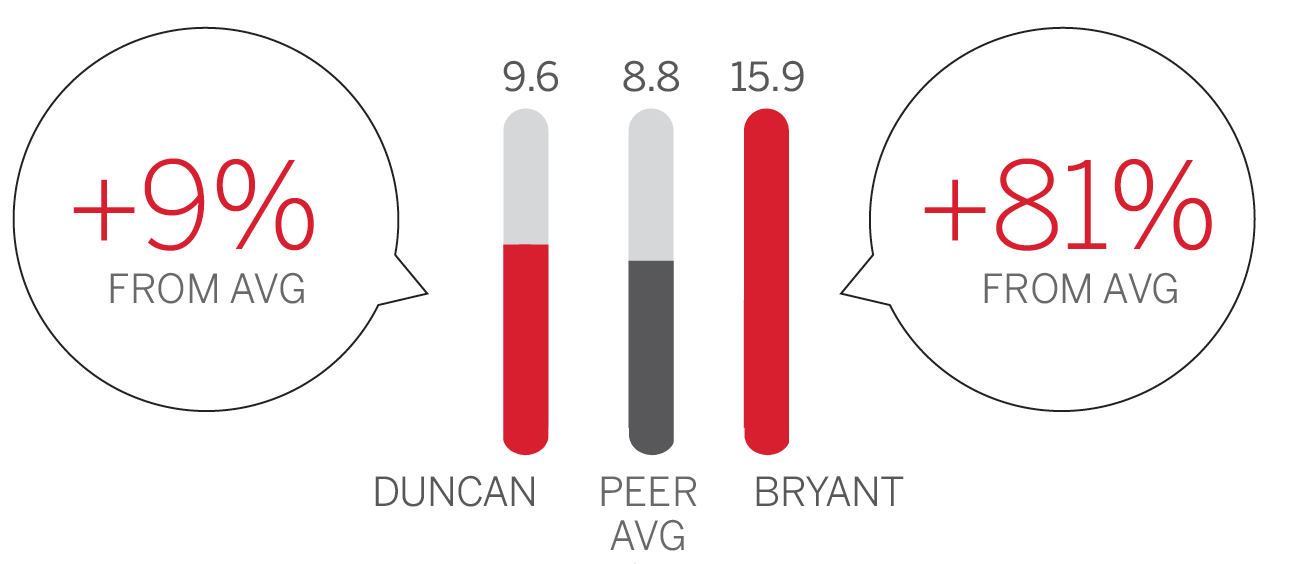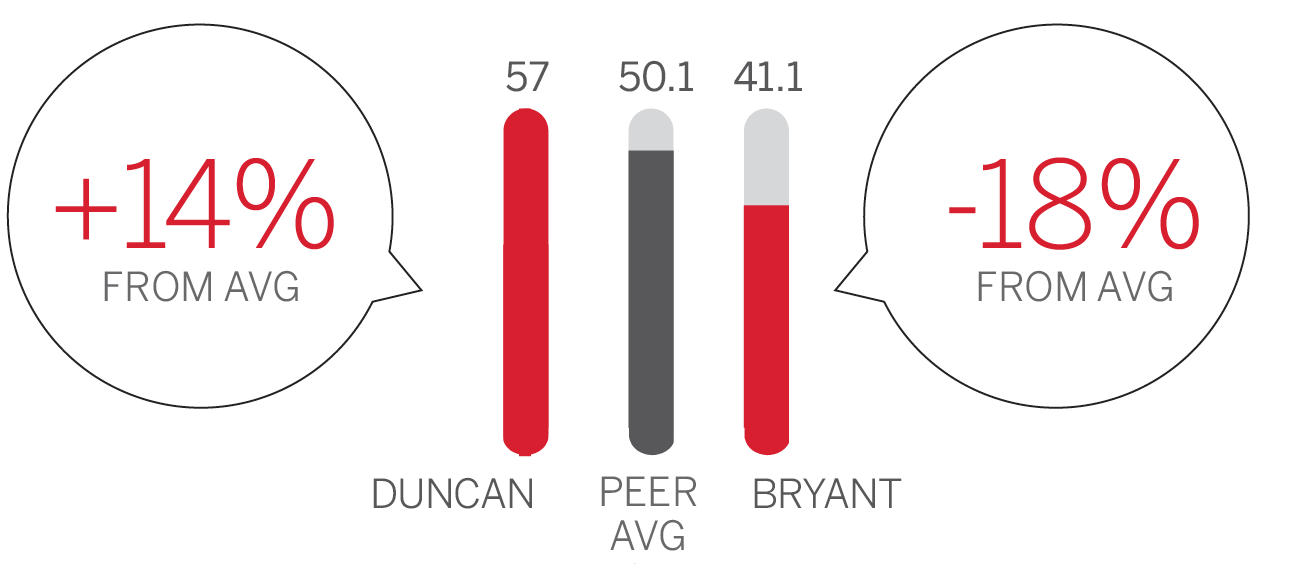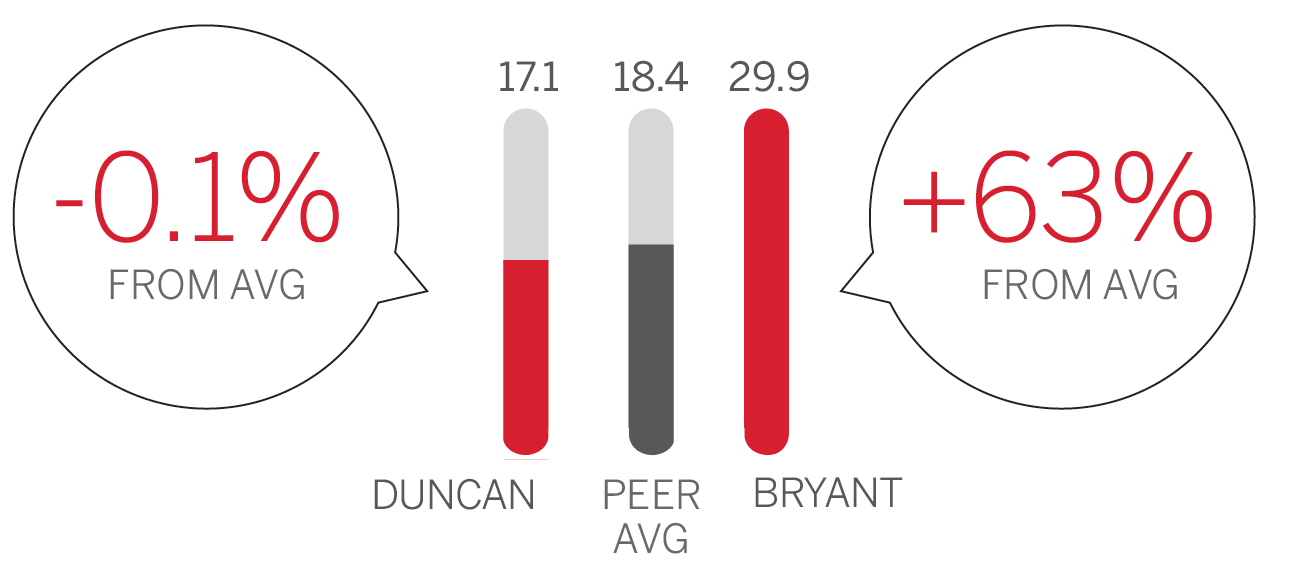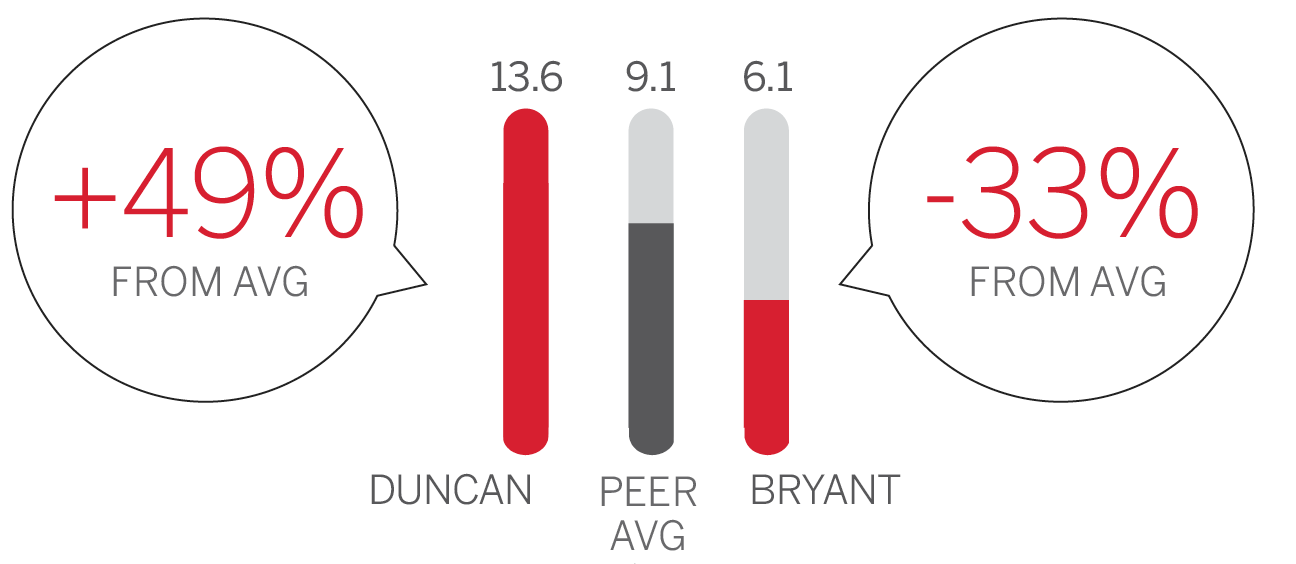Kobe Bryant and Tim Duncan, NBA icons in the twilight of their careers, face each other Friday night in one of their final head-to-head matchups. Bryant has already announced this will be his final season, and Duncan's future remains uncertain, but there is a possibility he could be finished at the end of his 19th season in the league. Both still play significant minutes in their late 30s (31 MPG for Bryant, 27 for Duncan), and it's no secret that Bryant has struggled shooting the ball, while Duncan remains productive but no longer dominant. But how well are they doing in relation to other players in their age range? Is Bryant really that bad, and is Duncan as good as we think? We go inside the numbers to determine how they stack up against other aging vets in the league.
Peer group of 35+ vets
First, we have to determine a fair peer group for the duo. Including Bryant and Duncan, there are 15 players who are 35 years of age or older, with 10 games played and a minimum of 15 minutes played per game. Not a huge sample size, but a good mix of stars and role players to provide a realistic baseline:

Comparing the peer group: ORTG and RPM
Let's look at where Bryant and Duncan fall in relation to the rest of the peer group in terms of performance. As expected, they are at opposite ends of the spectrum when comparing Offensive Rating (ORTG, points added per 100 possessions) against Real Plus/Minus (RPM, how they affect their team's performance when on the floor). Duncan leads the group with an RPM of 6.25, and his ORTG of 105.9 is second only to Manu Ginobili's. Bryant is dead last in RPM (minus-4.53) and second-worst in ORTG (95.4).


Difference from peer group average
When comparing Bryant and Duncan, we'll now look at their numbers and the average of their peer group above, and calculate their percentage above or below average. It's a good way to tell whose numbers are the bigger outlier from the group.
POINTS/GAME: As you would expect, Bryant's per-game scoring average is very high for a rotation player in his late 30's (only Dirk Nowitzki scores more). Duncan's total is well below his career mark but still comfortably within the average for his age.

TRUE SHOOTING %: Bryant is much-maligned for errant shooting and his number here is in the low 40s, but seven of his peers don't crack 50 percent either, including Paul Pierce at 43.2. Duncan remains a very productive shooter, and his field goal percentage of 52.9 is his best since the 2006-07 season.

USAGE %: Bryant has one of the highest totals in the league, and well above his peer average. Second-highest in the group is Ginobili (25.2 percent). And Duncan is used more sparingly in San Antonio's offense, allowing more touches for younger stars like Kawhi Leonard and LaMarcus Aldridge.

PIE: Duncan trails Pau Gasol (16.6), Nowitzki (16.3) and Ginobili (13.9) in this category, but his all-around game measures up well in PIE, a percentage of game events a player achieves. Bryant isn't the worst of the bunch -- that honor goes to Richard Jefferson (4.3).


Peer group by Win Shares
Although you might expect Bryant to be at the bottom of most league-wide statistics, maybe he wouldn't stand out as much when compared to other players on the back end of their careers. In this last category, it's pretty clear that's not the case. Possibly the best way to illustrate how efficiently Duncan is playing (and how poorly Bryant is faring) is through Win Shares, an estimate of wins contributed by a player compiled by Basketball-Reference.com. Nowitzki (2.8) edges Duncan for the best total in the group. And Bryant? He's the only one with a negative value.


Statistics through Thursday morning.
